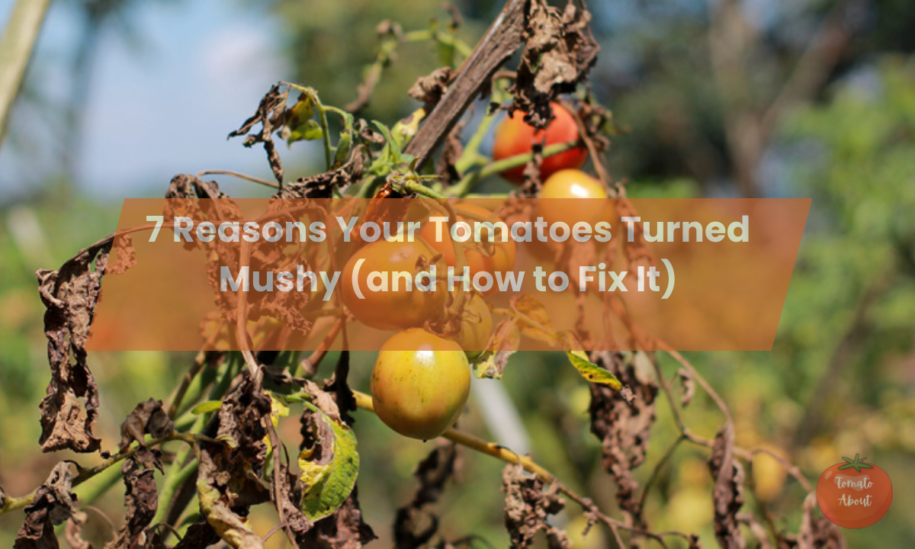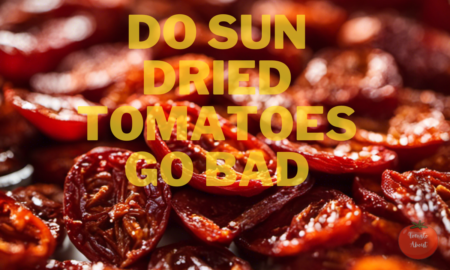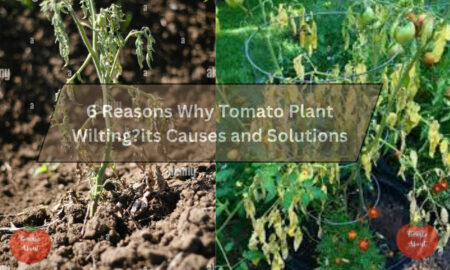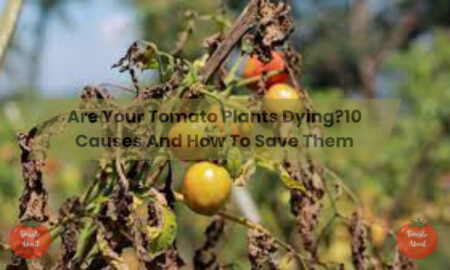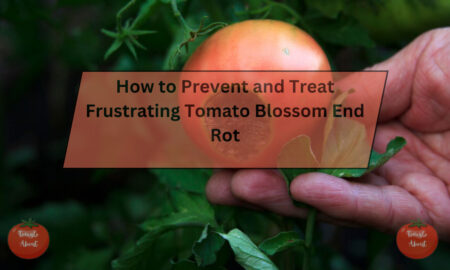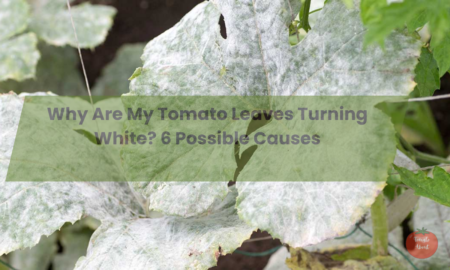Picture this: you’ve spent months dutifully tending your tomato plants. You’ve staked them, pruned them, fed them. Finally, those beautiful ripe red tomatoes are ready for picking. You slice into one, ready for that first incredible taste of summer…and instead of juicy perfection, you get a mealy, flavorless mess.
As a passionate gardener, I’ve been there. There’s nothing worse than mealy homegrown tomatoes! Over the years, through trial and error, I’ve learned how to grow luscious, juicy tomatoes and avoid the dreaded mealies. In this article, I’ll share the top 7 reasons your tomatoes can turn mealy and provide tips to help ensure perfect tomatoes next time.
What is a Mealy Tomato?
First, what exactly is a mealy tomato? Mealy tomatoes have a grainy, mushy texture reminiscent of a starch like cornstarch or potato flour. Instead of a juicy crunch, mealy tomatoes seem dry and pulpy in your mouth. Their taste is often bland and watery instead of rich and sweet.
While mealy tomatoes are still edible, their odd mouthfeel and lack of flavor make for a disappointing tomato-eating experience. As a tomato lover, I’ll go to great lengths to avoid growing mealy tomatoes in my garden!
Below, I’ll share the top 7 reasons your homegrown tomatoes can turn out mealy:
1. Inconsistent Watering – By Far the Most Common Cause of Mealy Tomatoes
Inconsistent watering is by far the number one cause of mealy, poor-quality tomatoes in home gardens. Tomatoes require consistent moisture to grow properly and develop a good texture. Their shallow root systems don’t deal well with drought stress.
Tomatoes left too dry will display cracking, blossom end rot (a dark leathery patch on the bottom of the fruit), or splits down the sides. Mealy texture often accompanies this type of under-watering. The plant goes into survival mode, aborting fruit or developing fruit with poor texture.
Overwatering is equally problematic. Tomatoes left in perpetually soggy soil suffer oxygen deprivation to the roots. They become more prone to dangerous fungal diseases like early blight, late blight, and verticillium wilt. Overwatered tomatoes often exhibit problems like:
Plants in waterlogged soil divert energy into surviving rather than fruiting. Even if the tomatoes don’t rot, they frequently develop mealy or odd textures.
The Solution: Consistent Moisture is Key
To grow perfect tomatoes, aim to provide consistent moisture without extremes. Here are tips:
- Water at the base of plants to avoid leaf fungal diseases
- Install drip irrigation or soaker hoses to provide uniform water
- Water when the top 2-3 inches of soil become dry upon checking
- Tomatoes need about 1-2 inches of water per week, adjusting for rainfall
- Mulch beds to maintain soil moisture and reduce water needs
- Consider self-watering containers for more carefree watering
Pay close attention to soil moisture. Touch the soil frequently to gauge if it’s becoming too wet or too dry. Maintaining even moisture prevents almost every water-related tomato problem.
2. Calcium Deficiency Causing Blossom End Rot and Mealy Fruits
Calcium is essential for proper tomato fruit development. It helps form strong cell walls for firm, robust fruits. A severe calcium deficiency shows up as blossom end rot – a black, sunken leathery patch on the bottom of the tomato. Calcium also leads to misshapen tomatoes with internal white tissue and mealy textures.
Causes of Calcium Deficiencies
Calcium gets transported into tomatoes through the water stream. Anything impeding the uptake and movement of water, such as uneven watering, root damage, or compacted soil, can induce a calcium shortage.
Soils with a pH below 6.0 often contain adequate calcium but plants can’t access it due to the acidity. Liming the soil raises the pH so plants can readily absorb calcium.
Excess nitrogen, potassium, or magnesium in the soil can interfere with calcium uptake by tomatoes. Maintaining nutrient balances is important.
Fixing Calcium Deficiencies
Here are tips for providing sufficient calcium for robust tomato growth:
- Test soil pH yearly and amend with lime if below 6.0
- Rotate planting sites to prevent nutrient imbalances
- Add organic matter like compost to improve nutrient availability
- Apply a calcium-rich fertilizer mid-season if needed
- Spray tomato leaves with liquid calcium supplements
- Use nutrient-balanced fertilizer blends
- Consistent watering helps transport calcium into fruits
With proper soil nutrition and pH, blossom end rot and insufficient calcium should not be a problem. Pay attention if symptoms arise and remedy accordingly.
3. Temperature Extremes Are Trouble for Tomatoes
Tomatoes thrive in warm weather with consistently warm nights. Temperatures veering too far from the optimal range of 70-85°F daytime and above 55°F nighttime cause pollination troubles, poor fruit set, blossom drop, and mealy fruits.
Heat waves over 90°F impair proper pollination. Blossoms shrivel and drop. The pollen-carrying capacity of bees declines at extremes. Catfaced tomatoes with irregularly shaped fruits are a hallmark of high heat stress.
On the opposite extreme, cool nighttime temperatures below 55°F severely inhibit fruit set and development. This causes tomatoes to become seedy, odd-shaped, and mealy.
Protect Plants from Temperature Swings
Monitor weather forecasts closely once plants start flowering. Be ready to take protective action at the first sign of extremes.
- Cover plants on hot days to provide filtered light and cooling
- Use cloches, fabric row covers, and old sheets to shield from the cold
- Move portable tomato plants to better conditions as needed
- Try growing heat-tolerant varieties if your climate gets very hot
- Site tomato beds on the south side of the home or in microclimate pockets
Prevent mealy tomatoes by maintaining the ideal day and night temperature range, however, you can. Pay close attention to the weather and don’t let cold snaps or scorchers ruin your crop.
4. Some Tomato Varieties are Naturally Prone to Mealiness
Not all tomatoes were created equal when it comes to luscious texture and taste. Some heirloom varieties have gained a reputation for mealy fruits no matter how well they are grown. Notable offenders include:
- Brandywine: legendary flavor but very prone to mealiness
- Cherokee Purple: small purple fruits often crack and turn mealy
- Belgian Giant: huge pink beefsteaks with marginal flavor
- German Johnson: large pink fruits with uneven ripening
If you’ve diligently tended your tomatoes and ruled out other causes, consider switching varieties if you keep getting mealy fruits. Talk to other local gardeners or your extension office for the best tomato varieties for your climate and taste preferences.
For reliably delicious tomatoes, consider these improved hybrids:
- Early Girl: compact plants with flavorful red fruits
- Celebrity: disease-resistant with great flavor
- Sweet Million: sweet cherry-type, high yields
- Better Boy: disease-resistant beefsteak with excellent flavor
- Roma: paste-type great for sauces and cooking
Finding the right tomato varieties can take some trial and error. Try a few new ones each season and take notes on performance. You’ll discover which tomatoes thrive in your garden.
5. Potassium Imbalances Lead to Mealy Fruits
Potassium serves many crucial functions in tomato health and fruit quality. It assists with disease resistance, water regulation, fruit sugars, and cell structure.
Insufficient potassium shows up as small, rough fruits with russeting skin and mealy, uneven texture. Blossom end rot may occur concurrently.
Too much potassium can induce magnesium or calcium deficiencies, which in turn causes poor fruit development. Excess potassium must be in balance with nitrogen and phosphorous levels.
Have your soil tested annually to determine optimal nutrient levels and pH. Tomatoes prefer a slightly acidic pH around 6.2-6.8.
Fixing Potassium Issues
If soil potassium is low, add supplemental fertilizer as recommended by your test results. Good organic potassium sources are greensand, kelp meal, wood ash, and high-quality compost. Use wood ash sparingly as it can raise soil pH.
Balance is critical. Follow test recommendations to apply needed potassium without overdoing quantities. Proper soil nutrition prevents almost every nutrient disorder.
6. Green Tomatoes Stay Mealy When Picked Early
It’s hard to resist sampling those first few tomatoes, even if they aren’t fully ripe yet. However, picking tomatoes prematurely often results in disappointing texture and flavor at maturity.
Even if the tomato eventually turns from green to red off the vine, the texture and taste won’t be the same. The pectins don’t mature and cross-link properly when picked early.
Wait until tomatoes are fully colored on the vine before harvesting for optimal texture and flavor. Tomatoes are unique among crops in that the flavor keeps improving the longer you leave them on the plant.
Tips for Picking Perfectly Ripe Tomatoes:
- Wait for full color to develop before picking
- Ripe tomatoes should feel slightly soft on the bottom
- A ripe tomato should release easily from the stem
- Time harvests for when you plan to eat them soon after
- Vine-ripened tomatoes keep only 1-3 days at room temp
Ignore immature green tomatoes as long as possible – the patience will pay off in delicious ripe fruits!
7. Refrigerating Tomatoes Causes Mealy Texture
Never put fresh garden tomatoes in the refrigerator! The cold damages enzymes and cell structure, causing mealy, grainy texture, and muted flavors. Even a short chill in the fridge alters the delicate tomato texture.
Instead, let freshly picked tomatoes sit stem-side up on the kitchen counter out of direct sunlight. Use ripe fruits right away for the best quality. Check tomatoes daily and use up any overripe ones quickly in cooking.
If you grow a huge bounty, consider canning or freezing excess tomatoes. But avoid refrigerating fresh tomatoes until you’ve cooked them. The cold permanently damages texture.
Proper Tomato Storage
- Never refrigerate fresh, uncooked ripe tomatoes
- Sort through tomatoes daily, use ripe ones immediately
- Lightly wrap cut tomatoes, and store in the fridge for up to 2 days
- Cook very soft tomatoes soon after picking
- Canned, frozen, and cooked tomatoes can be refrigerated
- Store winter tomatoes separately from other produce if possible
With reasonable harvests spaced over the season, fridge storage shouldn’t be necessary. Just keep enjoying those vine-ripened tomatoes as they come!
Frequently Asked Questions
Q: Why do some of my tomatoes split down the sides and turn mealy?
A: Splitting and mealy texture are often caused by inconsistent watering. Too much water uptake after a dry period causes rapid swelling in tomato fruits that leads to longitudinal splitting. Maintain even soil moisture to prevent splitting and mealy fruits.
Q: I amended my soil with calcium, but still have blossom end rot and mealy tomatoes. What’s wrong?
A: Blossom end rot is caused by a calcium deficiency in the fruit itself, not just low soil calcium. Anything impeding the plant’s ability to transpire water to the fruits will lead to calcium disorders. Ensure you are watering evenly and not over-fertilizing, which can disrupt nutrient uptake.
Q: Are yellow or white heirloom tomatoes as prone to mealiness problems as red varieties?
A: Yes, many heirlooms of all colors tend to be more fragile and susceptible to texture issues compared to hybrids bred for improved disease resistance and fruit quality. Select your variety carefully and be extra diligent with cultural practices to avoid mealies.
Wrapping up
Even experienced gardeners sometimes get a lackluster tomato crop. Now that you know the common causes for mealy homegrown tomatoes, you can take steps to avoid it next season. Pay close attention to consistent soil moisture, and nutrients, and protect plants from temperature extremes. And resist sampling tomatoes too early – allow them to fully ripen for a deliciously firm texture and rich flavor.
Here’s to a bountiful tomato harvest with a mealy one in sight! Let me know if you have any other tips for preventing mealy tomatoes in home gardens.

